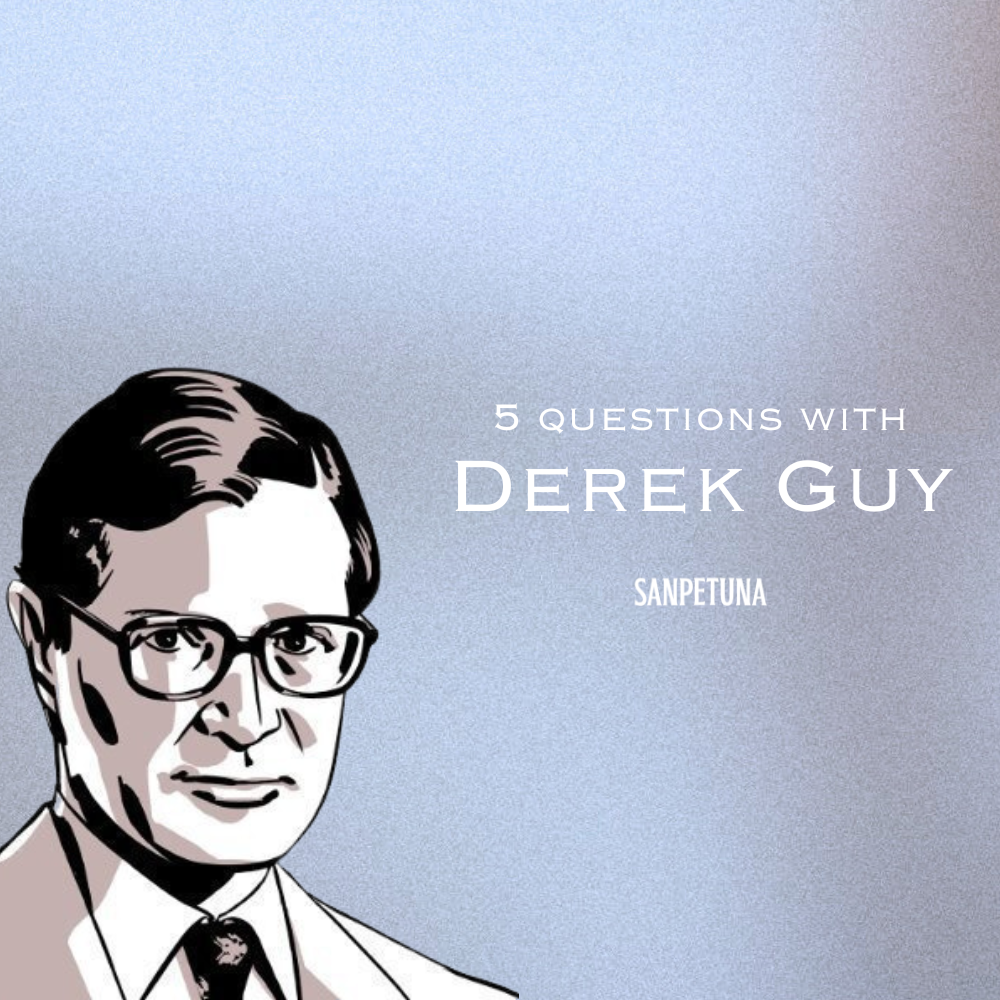
I've always thought of fashion as a kind of cultural and social language. People dress in ways to express themselves—their culture, background, identity, and sometimes even aspirations. As such, I tend to think of fashion in terms of subcultures and history.
I often use this analogy when talking about dress. Noam Chomsky, the famous MIT linguist and political commentator, is known for his phrase, "Colorless green ideas sleep furiously." It's an example of a sentence that is grammatically correct but makes no sense. Similarly, I think a successful outfit has to be about more than just combining random shapes and colors. The parts have to come together to create meaning, like how one puts words together to create a sentence.
When I write about clothing, I try to focus on the social histories and cultures around clothes. A lot of fashion is so removed from most people's lives. There are tons of stories every day about the latest trends and which Creative Director got appointed where. Even as someone with a deep interest in clothing, I find those stories so boring to read; I can't imagine what they're like for someone who's not even interested in clothes.
So when I can, I try to connect clothing to some broader story about history, sociology, or politics—things people care about—which I think then makes clothing feel more relevant to their lives. If you tell any story that involves humans, there will be clothing involved because humans wear clothes. So if you talk about the California hippies who formed rock climbing groups in the 1970s, you can then talk about the styles found at Patagonia. If you talk about pacificist Shaker communities during the formation of the United States, you can then talk about Shaker sweaters. Through these stories, clothes become more interesting to people.
And by knowing more about the semiotics of clothes, people can be better dressed, as they'll know how to combine things to create meaning that's recognizable even to people who may not know the intricacies of these histories.
I liken it to Balkanized islands. There are small communities now that may be located near each other, but are essentially operating on their own terms and using their langauge—classic menswear, workwear, techwear, avant-garde, etc. It's very hard to have conversations nowadays, as compared to twenty years ago, because there's no dominant discourse. The market has also bifurcated towards the low and high end of the price spectrum, which is unfortunate.
Well-dressed people on the street and well-dressed friends. Sometimes I'll see someone in a really nice outfit and take something away from it, such as an idea of how to wear something or an appreciation for a brand. I wrote a post a while ago about something I called bookcore, which was inspired by people I see inside my local bookstores.
"It has always bothered me that menswear has become less accessible for the everyday person. The concepts and aesthetics are increasingly niche; the clothes are increasingly expensive. I think this is a very bad development because wherever you are in the menswear community—anything from J.Crew to bespoke tailoring to Engineered Garments to Rick Owens—these communities need new blood and empty closets to survive. "
"We need to make menswear accessible so that people who may have never thought about dressing better can find joy in clothes."
"That may mean they get into something very basic at first, such as wearing oxford cloth button-downs or upgraded raw denim jeans. They may stay there; they may not. Some guys start there and eventually evolve into a full-blown Japanese workwear wardrobe full of niche brands.
But having that entry point is important. As my Twitter has grown, I've tried to provide some of that for audiences. I used to make very niche jokes on Twitter about brands such as Engineered Garments and Kapital. But as my audience has grown, I've shifted more towards things that I think some people may find useful, such as how to buy a quality cashmere sweater or what to look for in a suit. It's not that I think everyone who follows me wears a suit, but talking about suits is a lot more conceptually accessible than talking about some weird Kapital piece. And by talking about fabrics, silhouettes, and construction in tailoring, I'm hoping that some may find something interesting about clothing, which hopefully sparks an interest in them.
My hope is that people pick up a language in clothing—any language—and develop a taste for what they like, so that they may find more joy and fulfillment in what they purchase."
Find people who can guide you on this journey. Don't try to deduce everything on your own by learning everything you can about linen and pad stitching and felted wool. Find people who you can turn toward—trusted clothiers, tailors, and even friends with good taste. Some people go into this with a very adversarial relationship with the people who provide them with clothes, trying to nickel and dime them at every turn and checking small details because they assume people are tricking them.
I think it's good to be informed, but you ultimately need to find trusted clothiers and tailors who can help you build a good wardrobe. And more than maxing out on quality, focus on maxing out the emotional satisfaction you'll get from wearing said clothes. Ultimately, you want to feel good in these things. So hone your emotional antennae for what makes you feel excited on a long-term basis.








